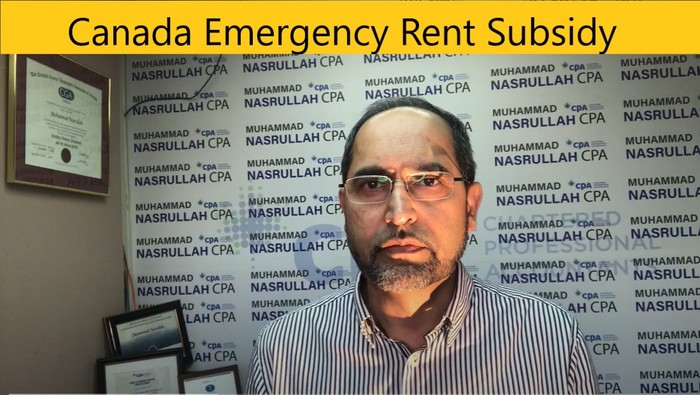
Overview
 The government launched the new Canada Emergency Rent Subsidy to support businesses, non-profits, and charities that continue to be economically impacted by the COVID-19 pandemic. This new rent subsidy would be available retroactive to September 27, 2020 until June 2021.
The government launched the new Canada Emergency Rent Subsidy to support businesses, non-profits, and charities that continue to be economically impacted by the COVID-19 pandemic. This new rent subsidy would be available retroactive to September 27, 2020 until June 2021.
There are some details for the first 12 weeks of the program, until December 19, 2020. The new program would mirror the Canada Emergency Wage Subsidy, a simple and easy-to-understand program for affected qualifying organizations. The new rent subsidy is intended to provide benefits to qualifying renters and property owners directly, without the participation of landlords.
Eligible Expenses
Eligible expenses including:
- Commercial rent
- Property taxes
- Property insurance
- Interest on commercial mortgages
Conditions
- You should pay under written agreement entered before October 9, 2020

- Expenses related to real property should be located inside Canada
- Expenses related to residential property used by the taxpayer are not eligible
- Payments made between non-arm’s-length entities are not eligible
- Each qualifying period would be capped at $75,000 per location
- Overall cap is $300,000 that would be shared among affiliated entities
Eligible Entities
- Partnerships that are as high as 50 percent owned by non-eligible members
- Non-public colleges and schools, including institutions that offer specialized services, such as arts schools, driving schools, language schools or flight schools
In addition, an eligible entity must meet one of the following conditions:
- Have a payroll account since March 15, 2020 or have been using a payroll service provider
- Have a business number since September 27, 2020 (and qualified for the bona fide rent subsidy claim made by Canada Revenue Agency)
- Meet other conditions that may be prescribed in the future
Calculating Revenue
- The revenue must from ordinary activities in Canada earned from arm’s-length sources (revenue from extraordinary items and amounts are excluded)
- For registered charities and non-profit organizations, the calculation includes most types of revenue, excluding the revenues earned from non-arm’s length persons.
Reference Period For The Drop-In-Revenue Test
Eligibility would generally be determined by the change in an eligible entity’s monthly revenues, year-by-year, for the applicable calendar month.
Alternatively, an entity can also compare the average of its January and February 2020 revenues with its current reference month revenues.
| Qualifying Period | General approach | Alternative Approach | |
| Period 8 | September 27 to October 24, 2020 | October 2020 over October 2019 or September 2020 over September 2019 | October 2020 or September 2020 over average of January and February 2020 |
| Period 9 | October 25 to November 21, 2020 | November 2020 over November 2019 or October 2020 over October 2019 | November 2020 or October 2020 over average of January and February 2020 |
| Period 10 | November 22 to December 19, 2020 | December 2020 over December 2019 or November 2020 over November 2019 | December 2020 or November 2020 over average of January and February 2020 |
Note:
For simplicity, the period numbers align with those used for the Canada Emergency Wage Subsidy. Period 8 of the Canada Emergency Wage Subsidy program is the first period for which the rent subsidy will be in effect.
How Organizations Will Benefit 
Scenario 1:
Alex owns a kitchen supply store. The store was closed down in March and April due to the pandemic, but has since reopened. With new safety precautions in place Alex now limits the number of customers in his store. In September and October, his revenues are down 25 per cent compared to last year. He paid $5,000 in eligible rent costs during the first period of the rent subsidy. For this period, she will be eligible for a rent subsidy of 20 per cent, or $1,000.
Bob owns a local chain of three casual dining restaurants. With restrictions on dining room capacity and patio business declining as cooler weather sets in, his revenues were down 40 per cent in September and 60 per cent in October, compared to the same time last year. Bob incurred $30,000 in eligible rent costs in respect of the first period of the rent subsidy. He will be eligible for a rent subsidy at a rate of 52.5 per cent, for a benefit of $15,750.
Scenario 3:
MovieTime Group is a chain of six cinemas. MovieTime Group fully owns each cinema, which are all incorporated separately. In September, revenues were down 70 per cent, and in October, revenues were down over 80 per cent. MovieTime Group and its companies incurred rent costs of $600,000 in respect of the period.
Under the rent subsidy, MovieTime Group will be eligible for a base subsidy rate of 65 per cent on a maximum of $300,000 of rent expenses per period. At each location, only the first $75,000 of rent expenses is eligible for the subsidy. MovieTime Group members decide to divide the maximum $300,000 for the group equally amongst the six members, and each therefore can claim $50,000 in eligible expenses. The total group benefit will be $195,000 (or 65 per cent of $300,000).
For more information, please visit our Facebook, LinkedIn and website https://nasrullahcga.com/


